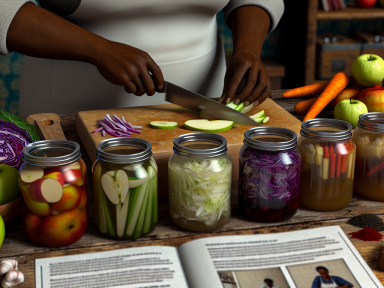Why Fermenting Foods is a Must for Every Homesteader
In the realm of self-reliance and survival, mastering the art of fermenting foods is not just a hobby—it’s a critical skill that could determine your ability to thrive in times of scarcity. Fermentation, an ancient method of food preservation, involves the conversion of carbohydrates to alcohol or organic acids using microorganisms—yeasts or bacteria—under anaerobic conditions. This method not only allows you to stockpile nutrient-dense foods but also increases food safety and security in uncertain times.
The Benefits of Fermenting Foods
- Extended Shelf Life: Fermented foods can last for months, if not years, without the need for refrigeration, making them ideal for long-term storage.
- Enhanced Nutritional Value: The process of fermentation can increase essential vitamins and minerals, including B-vitamins, Omega-3 fatty acids, and various enzymes.
- Improved Digestion: Fermented foods are rich in probiotics, beneficial bacteria that play a crucial role in gut health and digestion.
- Natural Preservation: The acidic environment created during fermentation can prevent the growth of harmful bacteria, ensuring food safety.
Essential Foods You Can Ferment at Home
The versatility of fermentation is vast, and you can start with commonly available ingredients. Here are a few staples you might consider:
- Sauerkraut: Made from cabbage and salt, this fermented food is not only easy to prepare but also a powerhouse of vitamins C and K.
- Kimchi: A traditional Korean side dish that is typically made from fermented cabbage and radishes. It is seasoned with chili peppers and other spices, adding a flavorful kick and additional health benefits.
- Pickles: Cucumbers can be transformed into crunchy, tart pickles through lacto-fermentation, a simple process involving salt and water.
- Kefir: A fermented milk drink similar to yogurt but with a thinner consistency. It’s produced by adding kefir grains to milk.
- Kombucha: A tangy tea beverage that results from fermenting sweet tea with a symbiotic culture of bacteria and yeast (SCOBY).
Starting Your Fermentation Journey
To begin your fermentation process, you only need a few simple tools and ingredients:
- Jars and Containers: Clean glass jars with airtight lids are essential for creating an anaerobic environment necessary for fermentation.
- Salt: Salt is critical as it inhibits the growth of unwanted microorganisms while promoting the growth of fermentation-friendly bacteria.
- Water: Use filtered or spring water free from chlorine, which can impede the fermentation process.
- Vegetables or Fruits: Start with fresh, organic produce to ensure the best results in flavor and nutrition.
Begin with simple recipes like sauerkraut or pickles to get comfortable with the process. As you gain confidence, experiment with different flavors and ingredients.
Final Thoughts
In a world where food security is no longer a guarantee, having the ability to preserve and create your own nutrient-rich food reserves is invaluable. Fermentation is not just a method of preservation; it’s a form of empowerment, enabling you to take control of your food sources in unpredictable times. Remember, the art of fermentation is both an ancient craft and a survival skill. As you master this craft, you not only enhance your palate but also fortify your preparedness for any crisis that may come your way.




GIPHY App Key not set. Please check settings